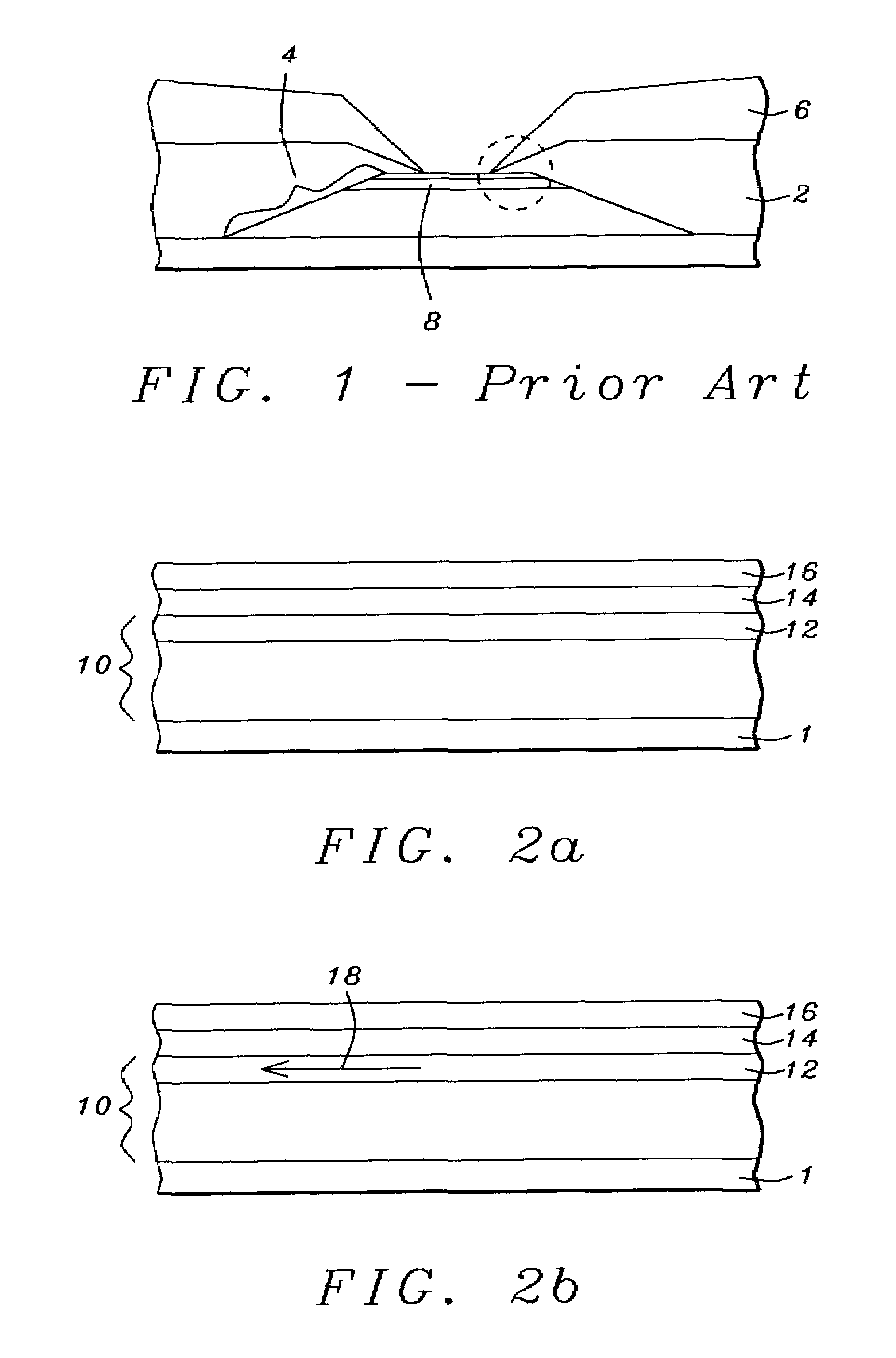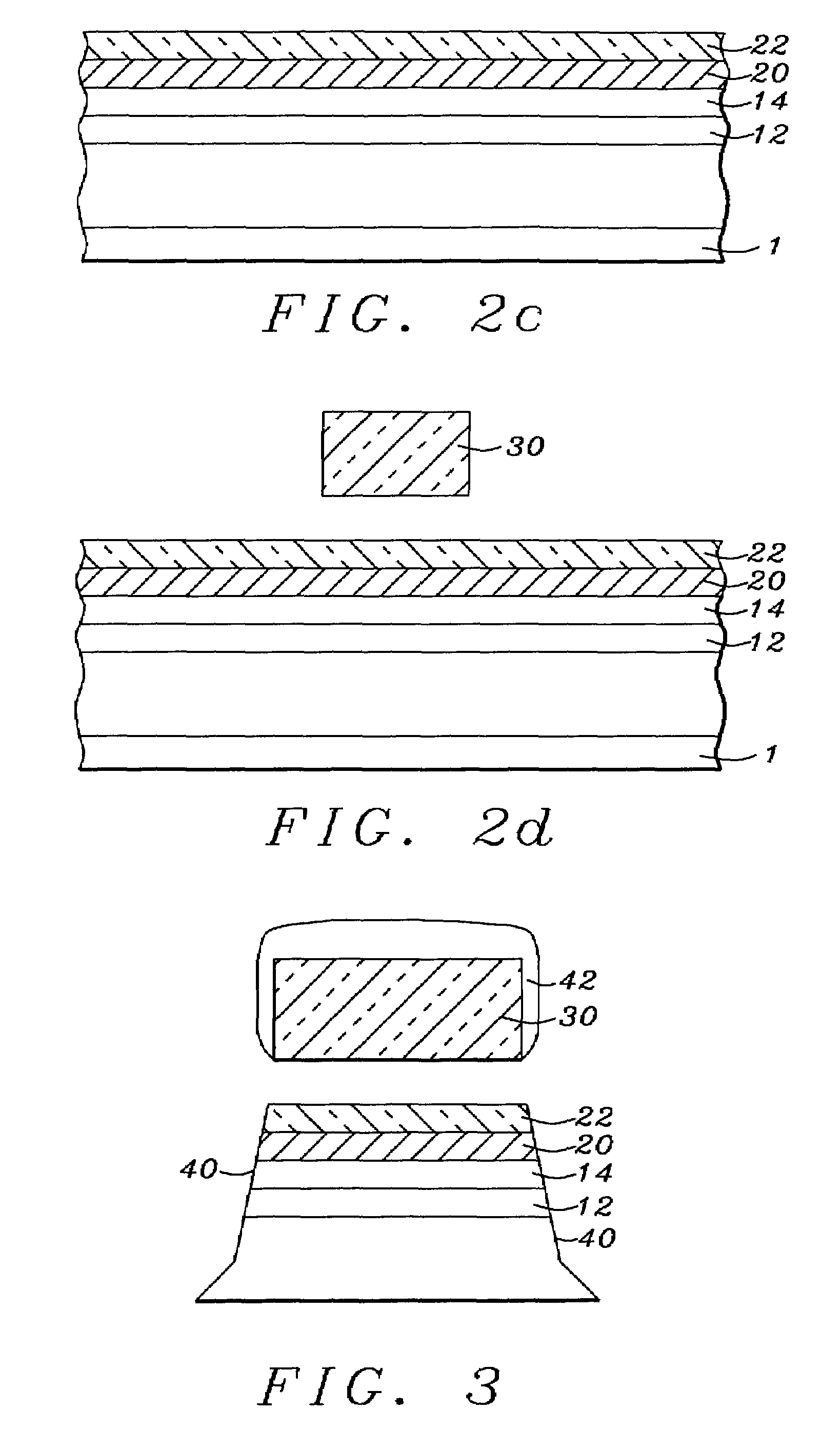Method to make abutted junction GMR head without lead shunting
a technology of abutted junction and read head, which is applied in the field of fabrication of giant magnetoresistive (gmr) read head, can solve the problems of reducing the reducing the sensitivity of the sensor, and reducing the effective usable length and, therefore, its sensitivity, so as to achieve strong output signal, improve free layer sensitivity, and maximize the effect of effective width of the free layer
- Summary
- Abstract
- Description
- Claims
- Application Information
AI Technical Summary
Benefits of technology
Problems solved by technology
Method used
Image
Examples
Embodiment Construction
[0018]The preferred embodiment of the present invention is a method for forming an abutted junction bottom spin valve GMR sensor having a minimal amount of conducting lead and hard biasing layer overspreading the upper surface of the sensor element.
[0019]Referring first to FIG. 2a, there is shown a schematic drawing of the first step required to prepare a GMR bottom spin valve sensor element for the abutted junction provided by the method of the present invention. As can be seen in the drawing, there is formed on a substrate (1) a bottom spin valve sensor element (BSV) (10), having a ferromagnetic free layer (12). A spacer layer (14) is formed on the BSV and a capping layer (16) is formed on the spacer layer. In this embodiment the ferromagnetic free layer (12) can be either a layer of CoFe formed to a thickness of between approximately 15 and 25 angstroms, or a composite layer of CoFe / NiFe, wherein the CoFe portion is of thickness between approximately 5 and 15 angstroms and the Ni...
PUM
| Property | Measurement | Unit |
|---|---|---|
| thickness | aaaaa | aaaaa |
| thickness | aaaaa | aaaaa |
| thickness | aaaaa | aaaaa |
Abstract
Description
Claims
Application Information
 Login to View More
Login to View More - R&D
- Intellectual Property
- Life Sciences
- Materials
- Tech Scout
- Unparalleled Data Quality
- Higher Quality Content
- 60% Fewer Hallucinations
Browse by: Latest US Patents, China's latest patents, Technical Efficacy Thesaurus, Application Domain, Technology Topic, Popular Technical Reports.
© 2025 PatSnap. All rights reserved.Legal|Privacy policy|Modern Slavery Act Transparency Statement|Sitemap|About US| Contact US: help@patsnap.com



